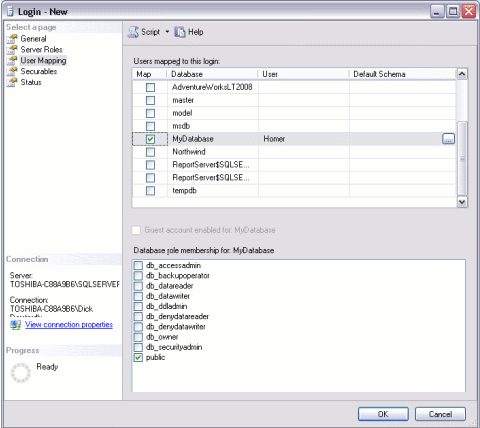

- #Sqlite stored procedures update#
- #Sqlite stored procedures code#
- #Sqlite stored procedures windows#

#Sqlite stored procedures code#
Executing business logic be it query OR interative OR conditional code inside an SP in the SQL engine can (1) improve data retrieval performance, (2) reduce network traffic (3) reduce app layer memory usage (4) cache query execution plans (precompiled SPs). 7 years, 1 month ago Most SQL engines are client/server (NOT SQLite!), For these, performance is a key issue when deciding where to put your business logic. There's plenty of other ways to prevent this attack further up the stack. I've also code reviewed insecure SPs that are vulnerable to SQL injection (typically based on dynamic SQL). Thousands of SQL based apps have been built without them that are safe against this attack. 7 years, 1 month ago Firstly, SP's existed long before SQL injection had even been thought of. There is absolutely no difference between a standard query which runs in the context of the SQL Engine, and selecting a SP. For example being able to Share the relevant queries by having them embedded in the sqlite file. Ref for /index.html/doc/trunk/There are many other reasons however. 8 years, 2 months ago Thanks for the addition. 8 years, 2 months ago You can use the SQLite equivalent of SQL CLR functions to achieve the same goal ( /questions/172735/…). I'm not saying that there is NO reason to implement SPs in SQLite - just much less reason than in other DB engines. 6 11 months ago Related Topics sqlite stored-procedures Comments 9 years, 8 months ago To clarify. NET Standard 2.1? - JTuto on Multi-targetting.
#Sqlite stored procedures windows#
Amer Neely on Installing and using SQLite extensions on macOs (and maybe Windows & Linux too).alex on Pretending that SQLite has Stored Procedures and Functions.Where term / approx > accuracy Or N 3584912846.1315813 # Exp(22) correct to 14 digits Links Select X, N + 1, term * X / (N + 1), approx + term * X / (N + 1), accuracy WITH RECURSIVE exp1(X, N, term, approx, accuracy ) as ( This time we call the Args (X,Y,Z,p4,p5,…) Drop Table if Exists Args Ĭreate Table Args as Select 1 as X, 2 as Y, 3 as Z, 4 as p4, 5 as p5, 6 as p6 In similar style, here's an Exponential function which lets you specify how many significant digits you want the result to, default to about 7 digits of accuracy. Since you can use CTEs to do recursion, you could in principle programming anything this way. A view which can refer to the arguments table and do the calculation.
#Sqlite stored procedures update#
Select Args.exponent, pow.exponent_remainder -1, pow.base, pow.result * pow.baseĪnd now you ‘call the function’ with: Update Args set Base=2.5, Exponent=5 Select Result from Power WITH RECURSIVE pow(exponent, exponent_remainder, base, result) as ( And CTEs allow recursion so you have Turing completeness.Īs an example, the Exponent function as a View: Drop Table if Exists Args Create Table Args as Select 5.5 as Base, 4 as Exponent You can use CTEs in a View definition, so you can build up complex calculations. Working around the lack of Functions seems harder but in fact, you can program functions with Views. Variables are easy to do: create a one-row temporary table and call it args or var.

The lack of Stored Procedures is usually ok-you can just use scripts. Win all round.īut sometimes you do wish you could do it in SQL. The fact that it doesn't have SQL syntax for stored procs and functions is usually not a handicap because it has an interface for the consuming application to register functions, which means you get to write your functions in your preferred programming language.


 0 kommentar(er)
0 kommentar(er)
